Abstract
Mammography use decreases with age although the risk of breast cancer increases with age. Medicare now provides biennial coverage for screening mammography. This study was designed to simulate the Medicare condition by subsidizing mammography among women in eight retirement communities in the metropolitan Philadelphia area. The study also measured the impact of health education interventions and the presence of a mobile mammography van on increased use of mammography. Retirement communities were assigned randomly to the control (cost subsidy alone) or experimental group (cost subsidy, mammography van, and tailored health education interventions). A total of 412 women ages 65 and older who had not had mammograms in the previous year were surveyed at baseline and 3 months later. Analytic techniques reflected the cluster nature of the randomization. Women in the experimental group were significantly more likely than the control group women to have obtained mammograms. Forty-five percent of the experimental group women compared with 12 percent of the control group women subsequently had mammograms in the 3 months after the baseline interview (P less than .001). Logistic regression analysis for mammography use indicated an odds ratio of 6.1 associated with being in the experimental group. For women in the experimental group, a separate logistic regression for mammography use showed an odds ratio of 7.8 associated with attendance at the educational presentation. The results suggest that Medicare coverage alone will not increase mammography use sufficiently to achieve year 2000 objectives. However, the addition of access enhancing and health education interventions boosts utilization dramatically.
Full text
PDF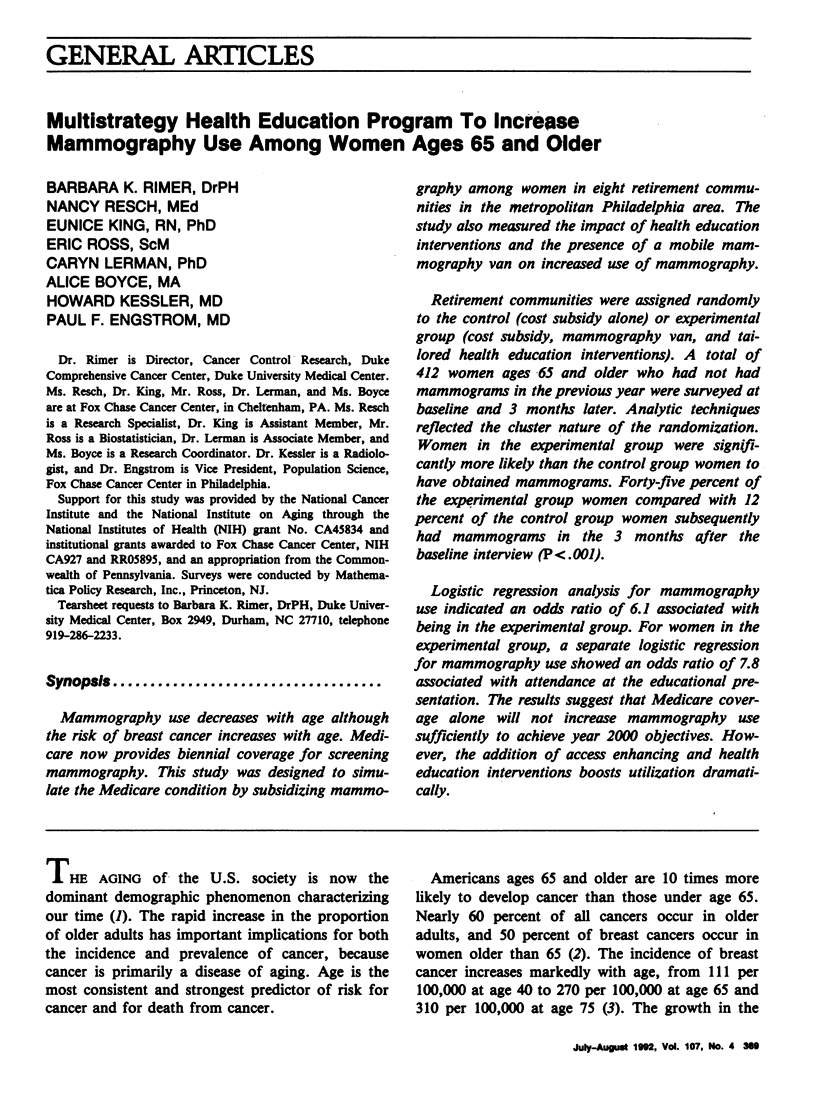
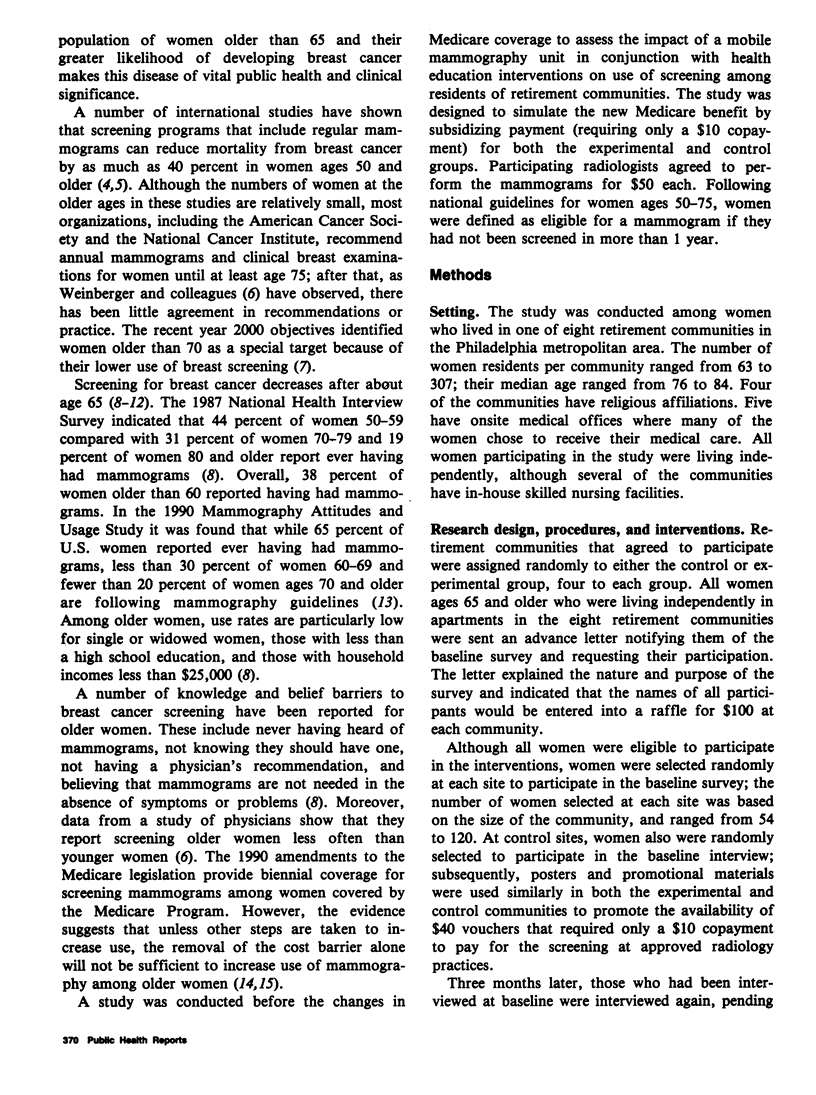
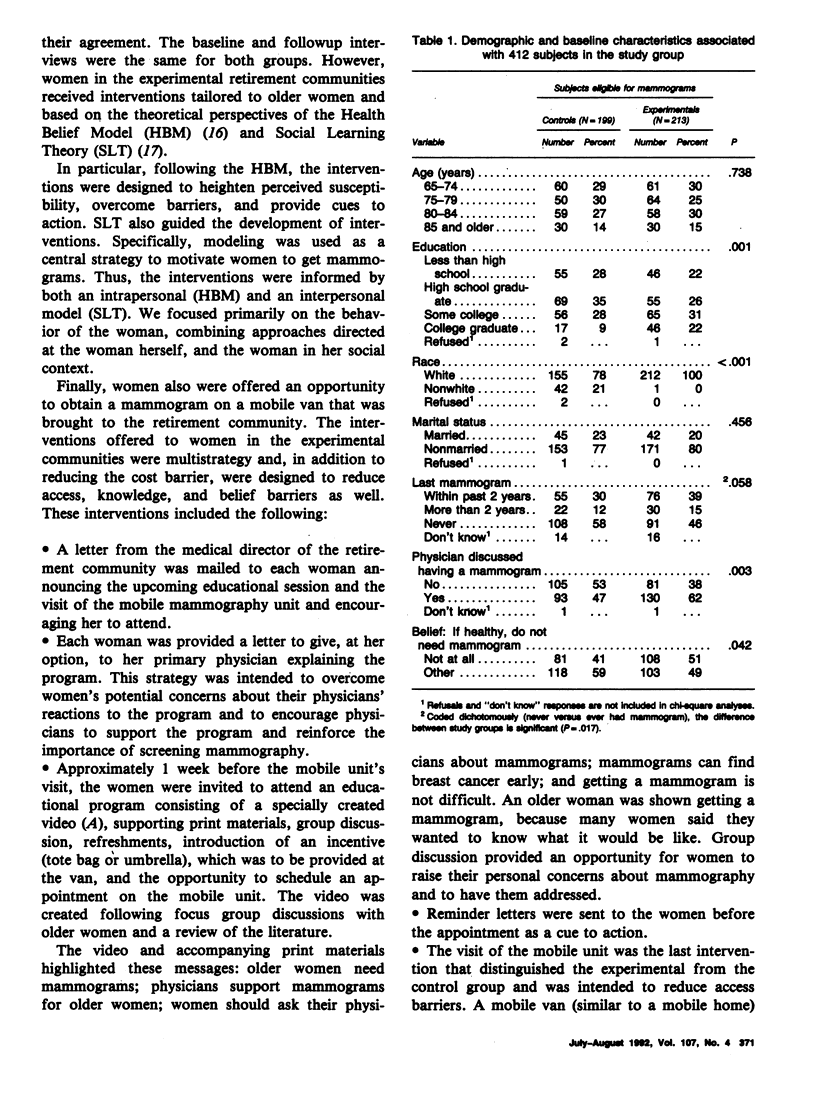
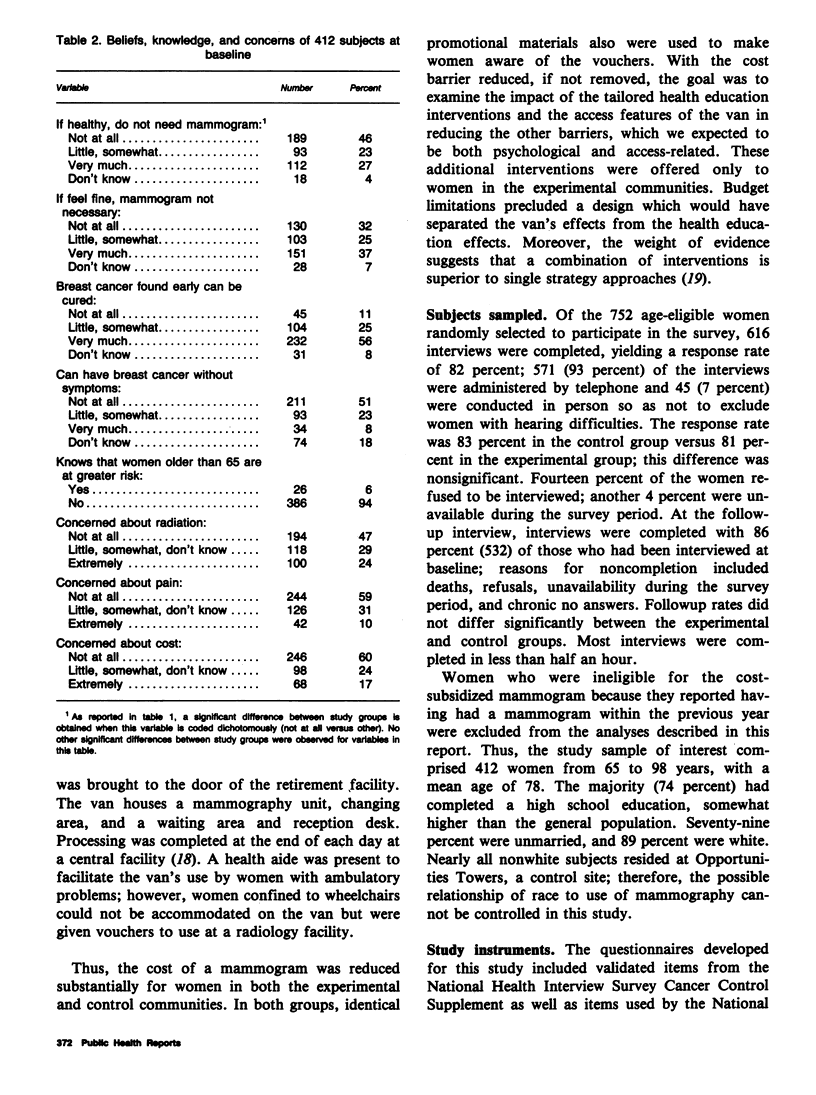
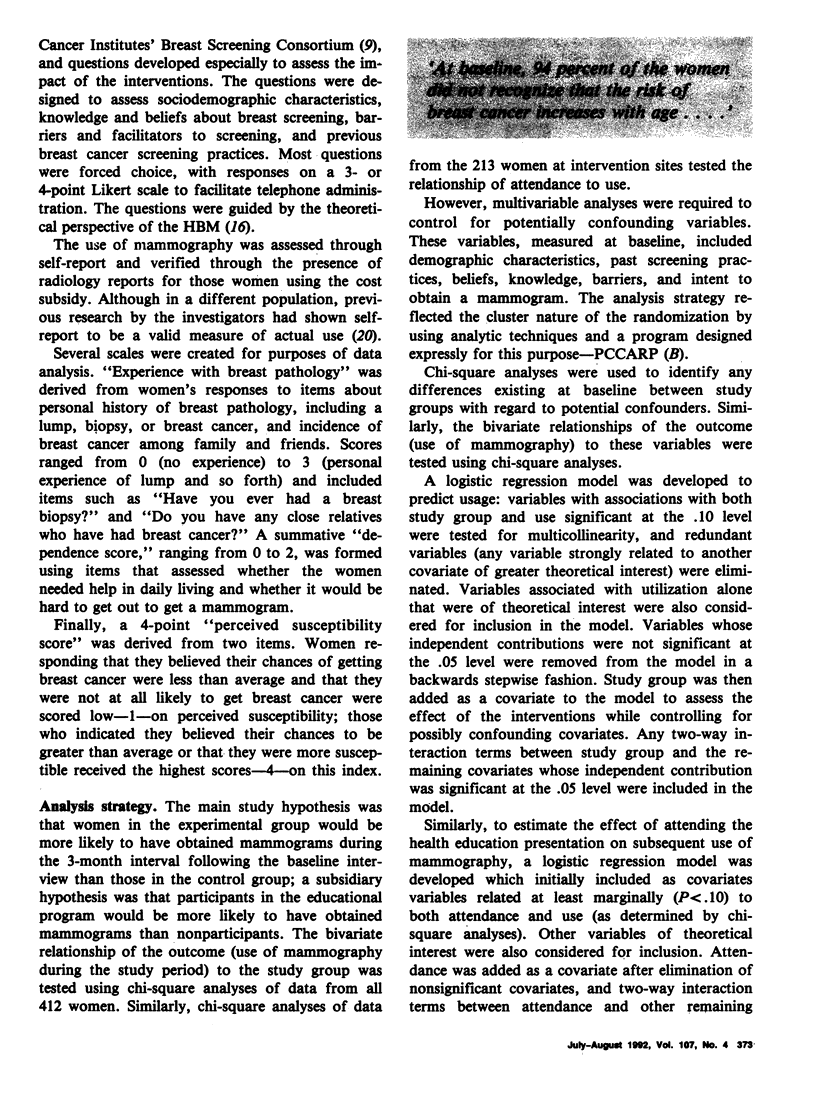
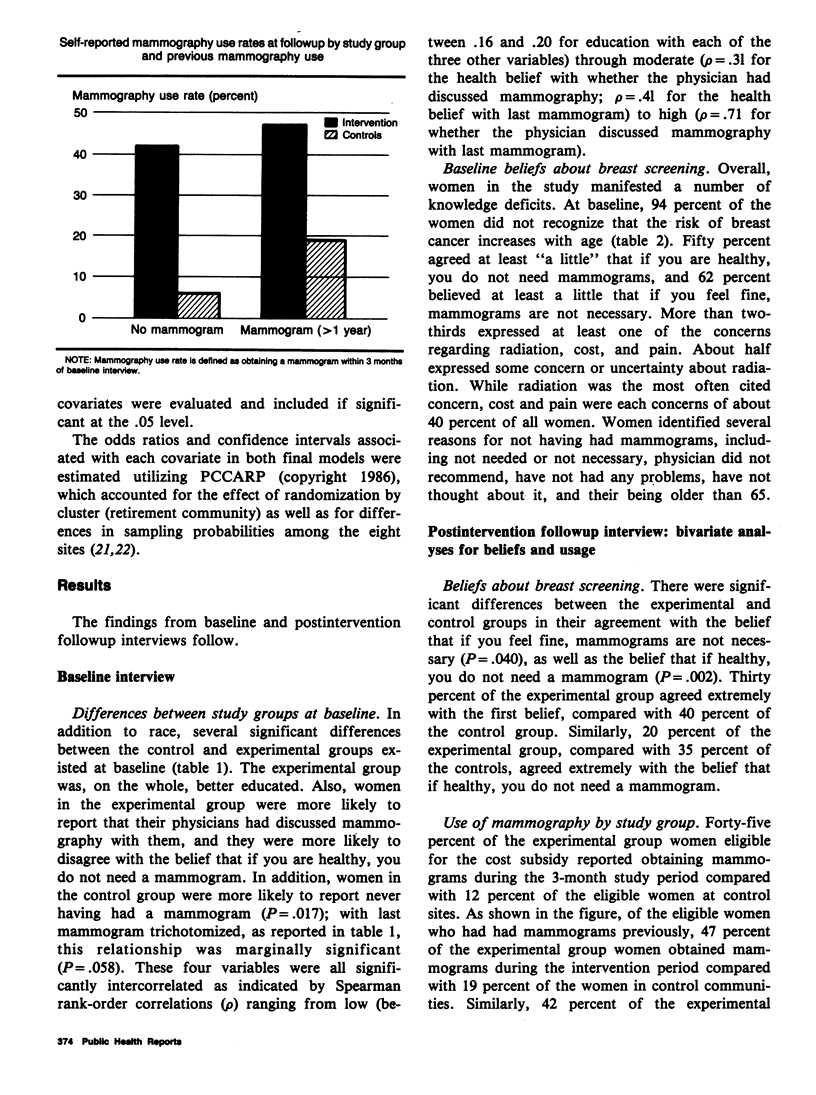
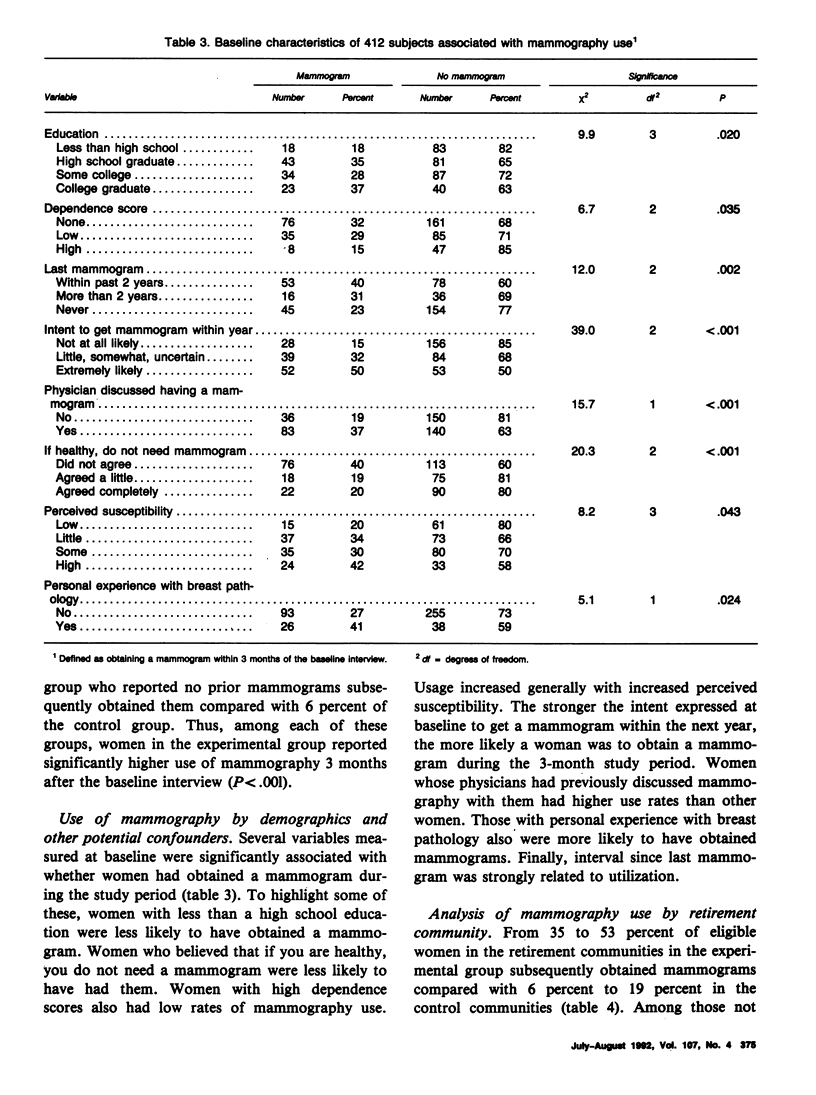
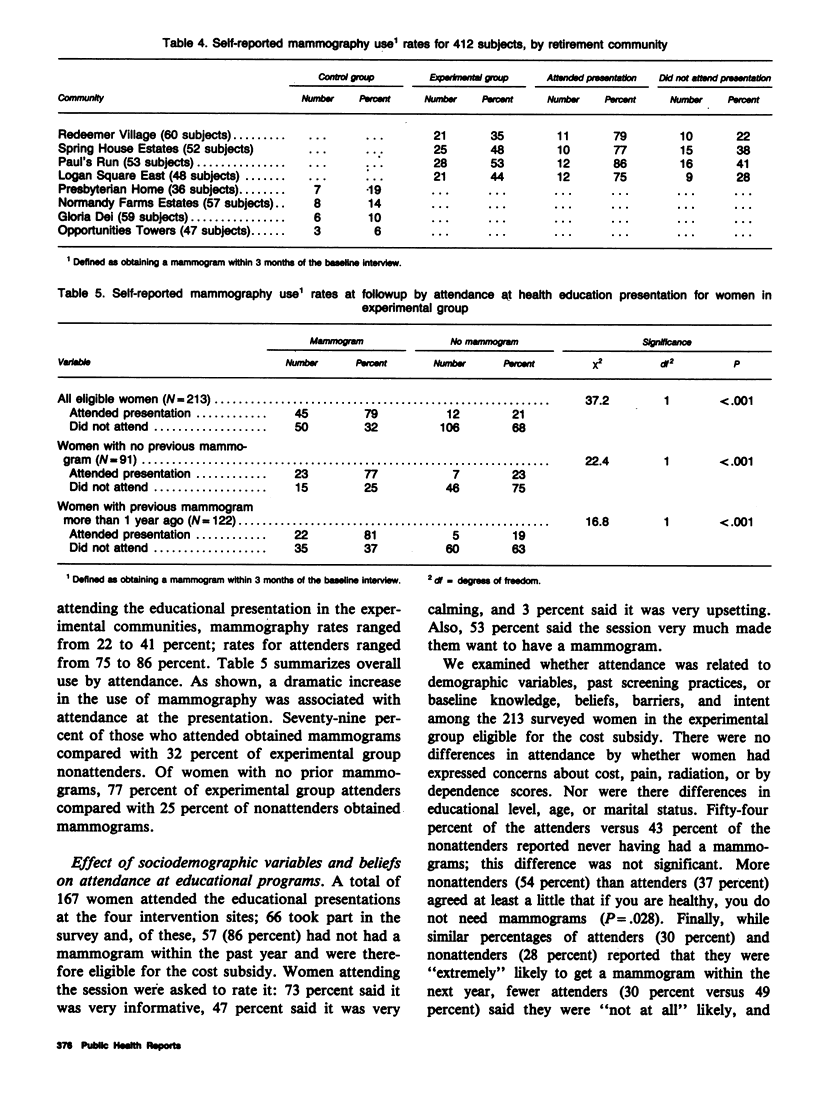

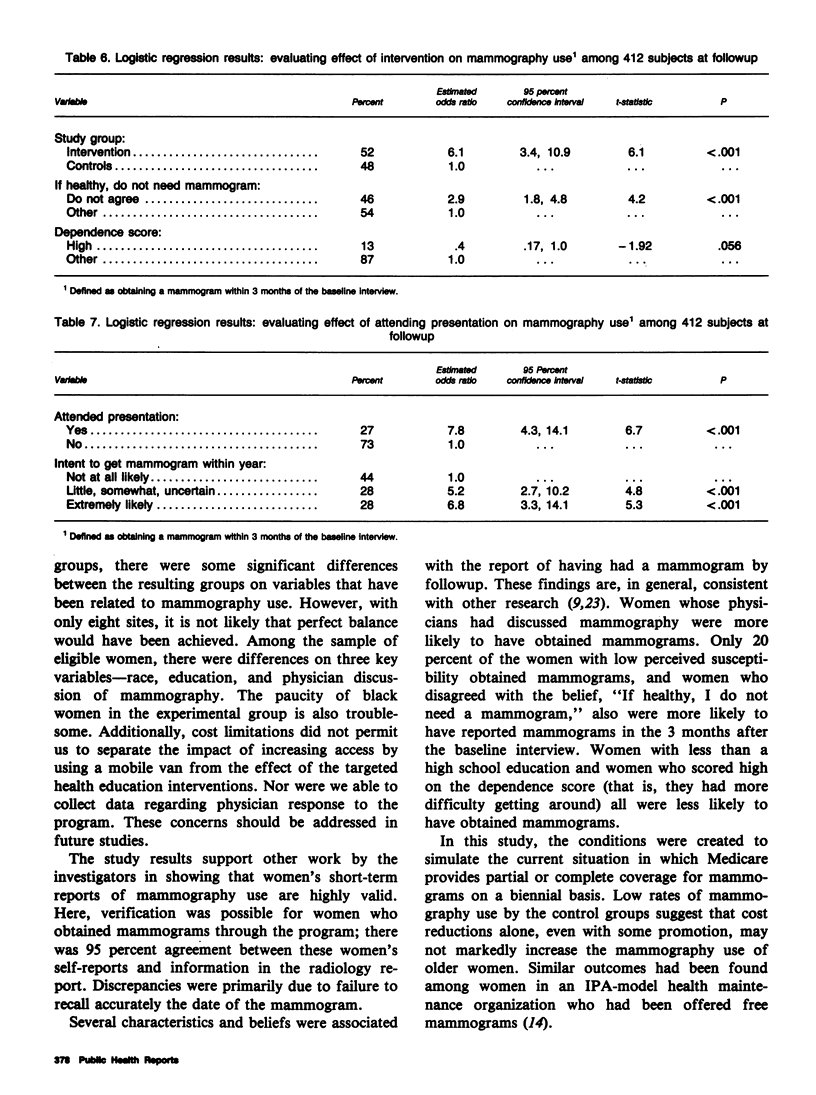
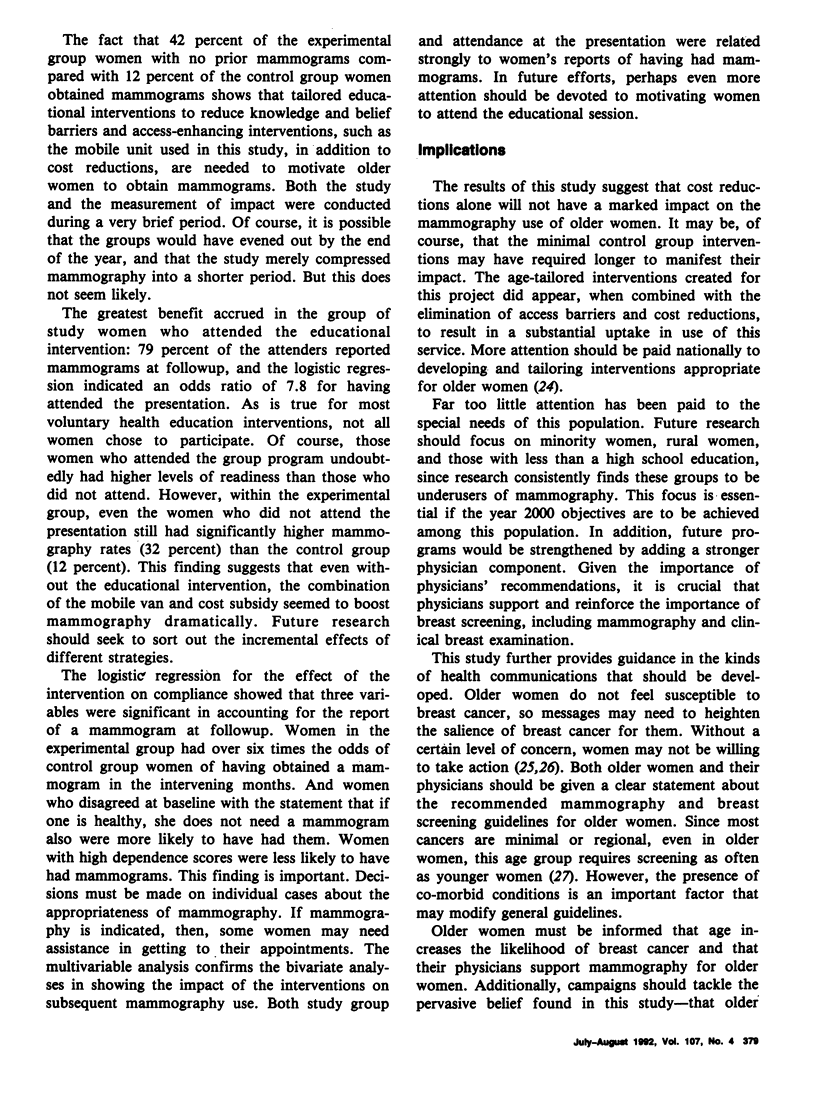
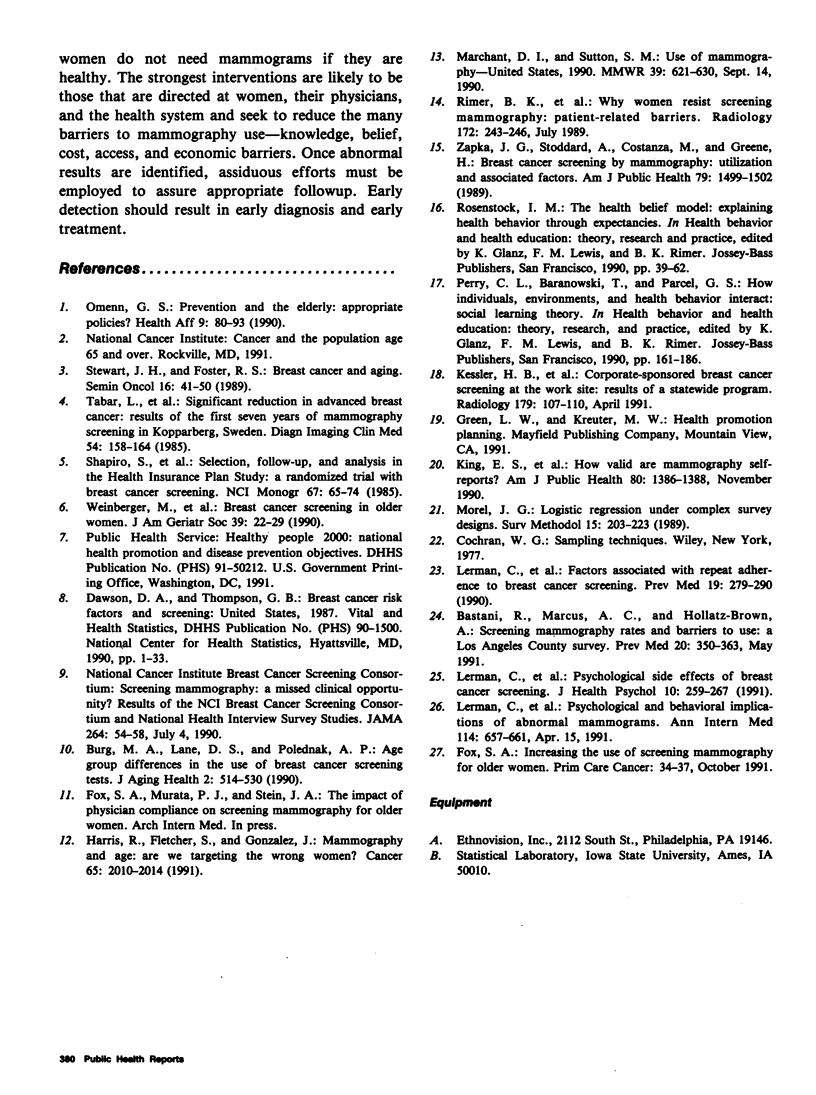
Selected References
These references are in PubMed. This may not be the complete list of references from this article.
- Bastani R., Marcus A. C., Hollatz-Brown A. Screening mammography rates and barriers to use: a Los Angeles County survey. Prev Med. 1991 May;20(3):350–363. doi: 10.1016/0091-7435(91)90034-2. [DOI] [PubMed] [Google Scholar]
- Burg M. A., Lane D. S., Polednak A. P. Age group differences in the use of breast cancer screening tests. The effects of health care utilization and socioeconomic variables. J Aging Health. 1990 Nov;2(4):514–530. doi: 10.1177/089826439000200406. [DOI] [PubMed] [Google Scholar]
- Kessler H. B., Rimer B. K., Devine P. J., Gatenby R. A., Engstrom P. F. Corporate-sponsored breast cancer screening at the work site: results of a statewide program. Radiology. 1991 Apr;179(1):107–110. doi: 10.1148/radiology.179.1.2006259. [DOI] [PubMed] [Google Scholar]
- King E. S., Rimer B. K., Trock B., Balshem A., Engstrom P. How valid are mammography self-reports? Am J Public Health. 1990 Nov;80(11):1386–1388. doi: 10.2105/ajph.80.11.1386. [DOI] [PMC free article] [PubMed] [Google Scholar]
- Lerman C., Rimer B., Trock B., Balshem A., Engstrom P. F. Factors associated with repeat adherence to breast cancer screening. Prev Med. 1990 May;19(3):279–290. doi: 10.1016/0091-7435(90)90028-i. [DOI] [PubMed] [Google Scholar]
- Lerman C., Trock B., Rimer B. K., Boyce A., Jepson C., Engstrom P. F. Psychological and behavioral implications of abnormal mammograms. Ann Intern Med. 1991 Apr 15;114(8):657–661. doi: 10.7326/0003-4819-114-8-657. [DOI] [PubMed] [Google Scholar]
- Lerman C., Trock B., Rimer B. K., Jepson C., Brody D., Boyce A. Psychological side effects of breast cancer screening. Health Psychol. 1991;10(4):259–267. doi: 10.1037//0278-6133.10.4.259. [DOI] [PubMed] [Google Scholar]
- Omenn G. S. Prevention and the elderly: appropriate policies. Health Aff (Millwood) 1990 Summer;9(2):80–93. doi: 10.1377/hlthaff.9.2.80. [DOI] [PubMed] [Google Scholar]
- Rimer B. K., Keintz M. K., Kessler H. B., Engstrom P. F., Rosan J. R. Why women resist screening mammography: patient-related barriers. Radiology. 1989 Jul;172(1):243–246. doi: 10.1148/radiology.172.1.2740510. [DOI] [PubMed] [Google Scholar]
- Shapiro S., Venet W., Strax P., Venet L., Roeser R. Selection, follow-up, and analysis in the Health Insurance Plan Study: a randomized trial with breast cancer screening. Natl Cancer Inst Monogr. 1985 May;67:65–74. [PubMed] [Google Scholar]
- Stewart J. A., Foster R. S., Jr Breast cancer and aging. Semin Oncol. 1989 Feb;16(1):41–50. [PubMed] [Google Scholar]
- Tabár L., Gad A., Holmberg L., Ljungquist U. Significant reduction in advanced breast cancer. Results of the first seven years of mammography screening in Kopparberg, Sweden. Diagn Imaging Clin Med. 1985;54(3-4):158–164. [PubMed] [Google Scholar]
- Weinberger M., Saunders A. F., Samsa G. P., Bearon L. B., Gold D. T., Brown J. T., Booher P., Loehrer P. J. Breast cancer screening in older women: practices and barriers reported by primary care physicians. J Am Geriatr Soc. 1991 Jan;39(1):22–29. doi: 10.1111/j.1532-5415.1991.tb05901.x. [DOI] [PubMed] [Google Scholar]
- Zapka J. G., Stoddard A. M., Costanza M. E., Greene H. L. Breast cancer screening by mammography: utilization and associated factors. Am J Public Health. 1989 Nov;79(11):1499–1502. doi: 10.2105/ajph.79.11.1499. [DOI] [PMC free article] [PubMed] [Google Scholar]


